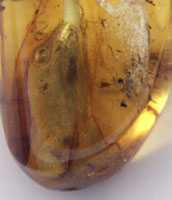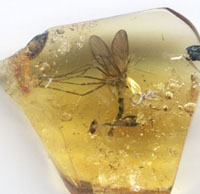
HARD Ltd. was established in the summer of 1991 in Sofia. Five years later it specializet in amber working and amber jewellery. This choice was not fortuitous. Amber is the first gem used by men for adornment. Aesthetic as it is, amber has a magnificent effect on those who touch it. Since Ancient time craftsmen, artists and jewellers have used amber inspire life in various works of art. This made amber extremely popular among the artistic elite, art connoisseurs and the aristocracy. Its miraculous healing power, used in medicine, is yet to be researched. The variety of amber shapes and colours and the mummified “messengers” from the past on Earth, bring us to a world of magic secrets.

Amber, known in the scientific society as SUCCINITE, originated from the resin of the ancient “Pinus Succinifera” and has undergone a process of fossilization (petrification) for 40-50 million years in very special and unstudied conditions. The so called “Amber wood” was situated in the area of the Baltic Sea. Since the term “amber” is wrongly attributed to the other fossilized resins found across the globe, we shall refer to the succinite as Baltic amber. The high contents of the specific amber acid and its other characteristics used in jewellery and medicine distinguish amber from the similar burmite, simatite, rumanite, Dominican and Mexican amber. Unconscious trades take advantage of its remote resemblance to different fossilized resins, even to brittle and fragile resins of young geological age, and offering amber-like formations instead of amber to their customers. It is important to know that, unlike other popular gems, the succinite cannot be derived synthetically. However, amber appearance can be imitated visually and unfortunately such imitations are widespread and difficult to distinguish by non-experts, which is the reason to find them even in reputable shops. These fossilized and synthetic resins and imitations should be sold as such. Passing them as amber (succinite) either outspokenly or surreptitiously is fraud and is persecuted by the law.
An astonishing fact is that amber has a specific weight of 1.05 to 1.10, which is nearly the weight of sea water. That is why pieces of amber had been cast ashore near the Baltic sea coast, where the richest deposits of amber are located. Nowadays due to the high demand this is more a myth rather than reality. Over 97% of the world production is extracted from a single deposit in Russia. The continuous diminishing of amber deposits and the need for development of increasingly expensive technologies for extraction of high-quality material for jewellery determines the steady upward trend in the price of the Baltic amber.

Amber articles can be divided in three groups according to the different tiling methods used:
1. Natural amber, succinite - raw material or products made of Baltic amber that have undergone only surface manipulation, such as cutting , filing, and polishing;
2. Treated amber (succinite) - products made of Baltic amber that have undergone thermal and plastic working in conditions similar to real natural processes. This method is used to enhance the dormant beauty of the mineral;
3. Reconstructured (pressed) amber - material from tiny pieces of Baltic amber or amber meal pressed together at high pressure and temperature. Then the material is manipulated by cutting, filling and polishing. It should be noted that pressed amber has the same chemical composition, but its structure is different and therefore its aesthetic qualities are incomparably lower, which results in a lower price. It must be placed separately from genuine amber and specially signify marked.
Many factors are considered in the appraisal of amber products – limpidness, location of inner cracks and patterns, presence of rare inclusions, uniqueness of the stone, size, shape, fineness of the craftsmanship, etc. but aesthetic perception determines the significance of all the above.
![]()


